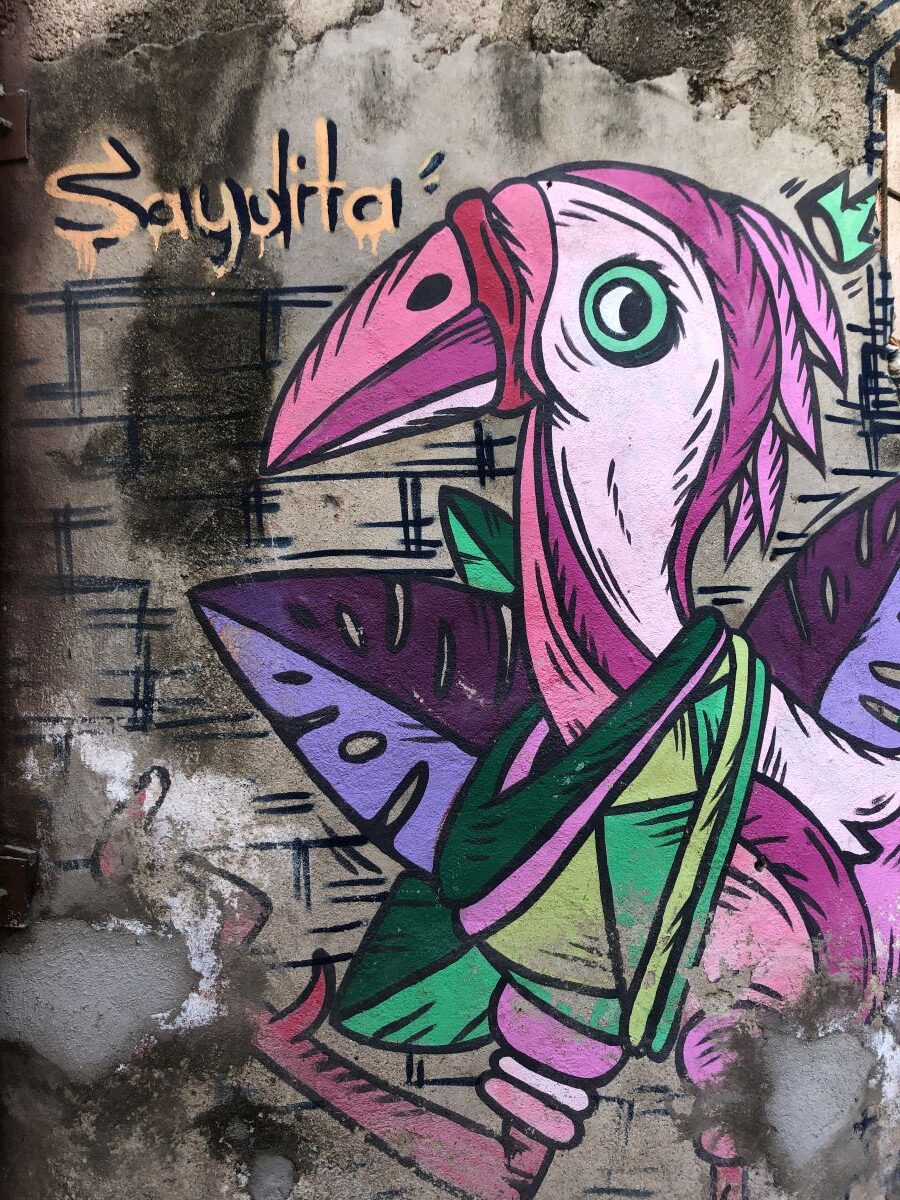As a lover of ancient history, I knew this would be a structure that I was going to try and get up close and personal with. Located just two kilometers from the city, one feels like they are truly in the middle of nowhere, standing beside this mammoth snake. But there is intrigue here. What is the mystery? The Skopje Aqueduct and its historical roots have never been solved.
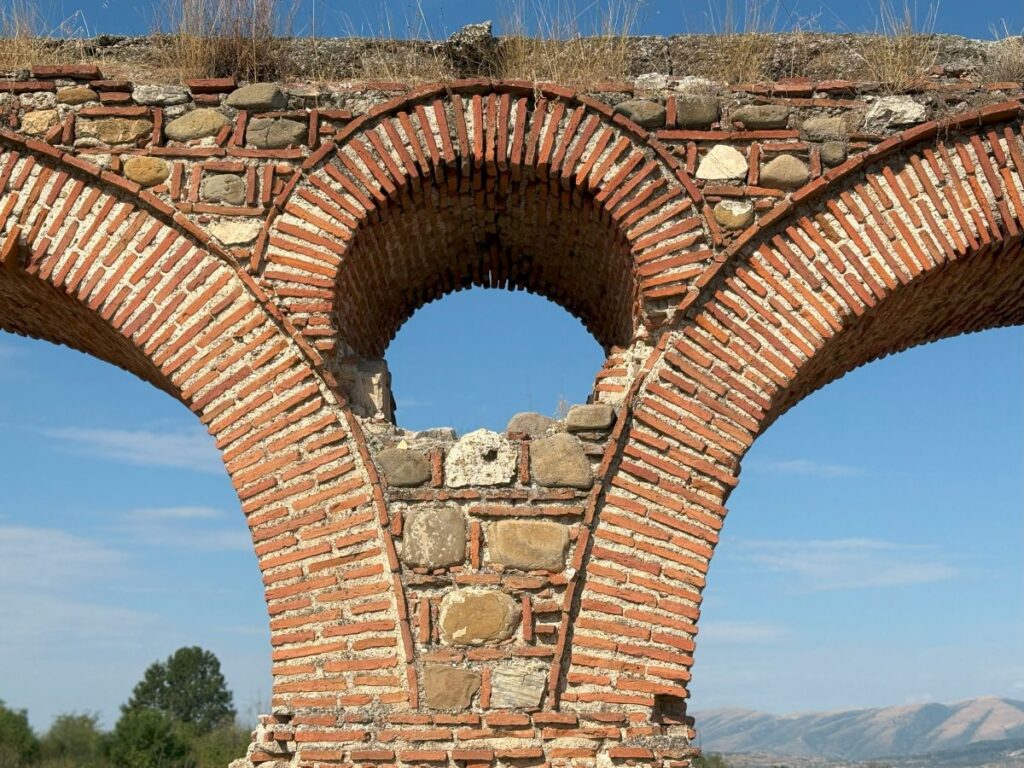
Getting There
Oh boy, this can be an adventure in itself. I rely solely on Google Maps to get me around this world. Most of the time, its fairly straight forward, sometimes it downright betrays me. This is one of those times. If you are walking from Skopje, Google Maps will lead you from the city on roads with a sidewalk of some shape. After walking for 40 minutes, the route will take you to the entrance of Military base and you will be turned away.
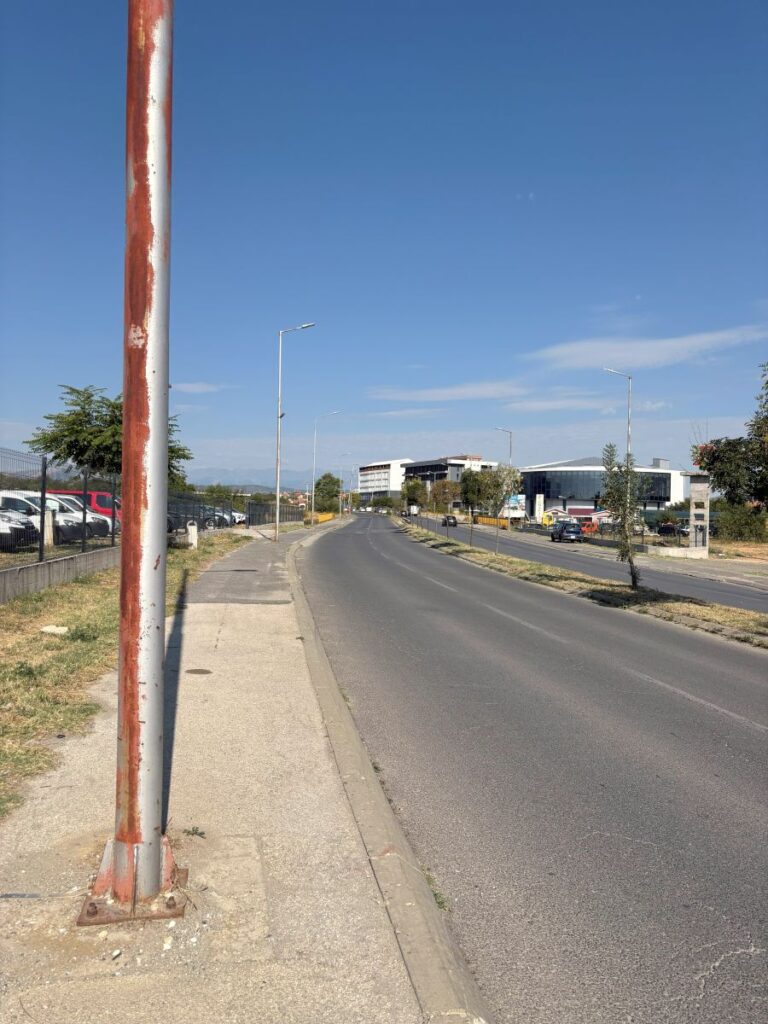
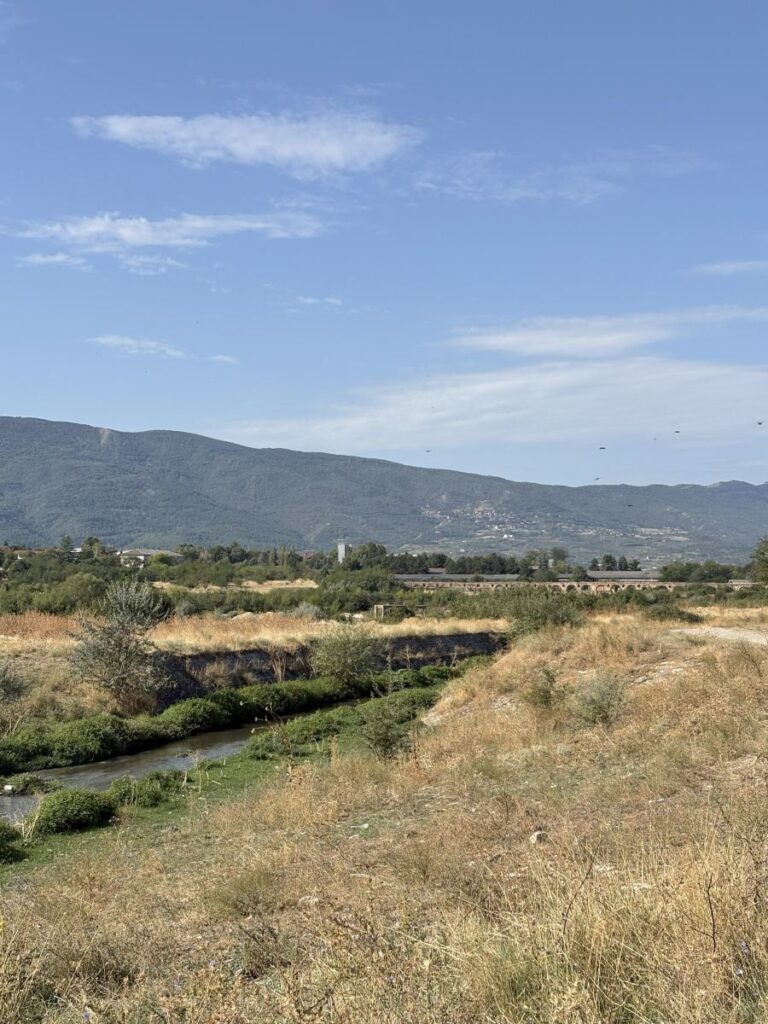
Having to reassess my route, and because there is no road that leads directly to the aqueduct, it’s a little tricky to navigate. To circumvent the base, you will need to pass through a Roma shanty town. Feeling uncomfortable, I sped through this area and out onto the next largest street. Following this until I could find a gravel road, I then proceeded through the dilapidated farmland and trails.

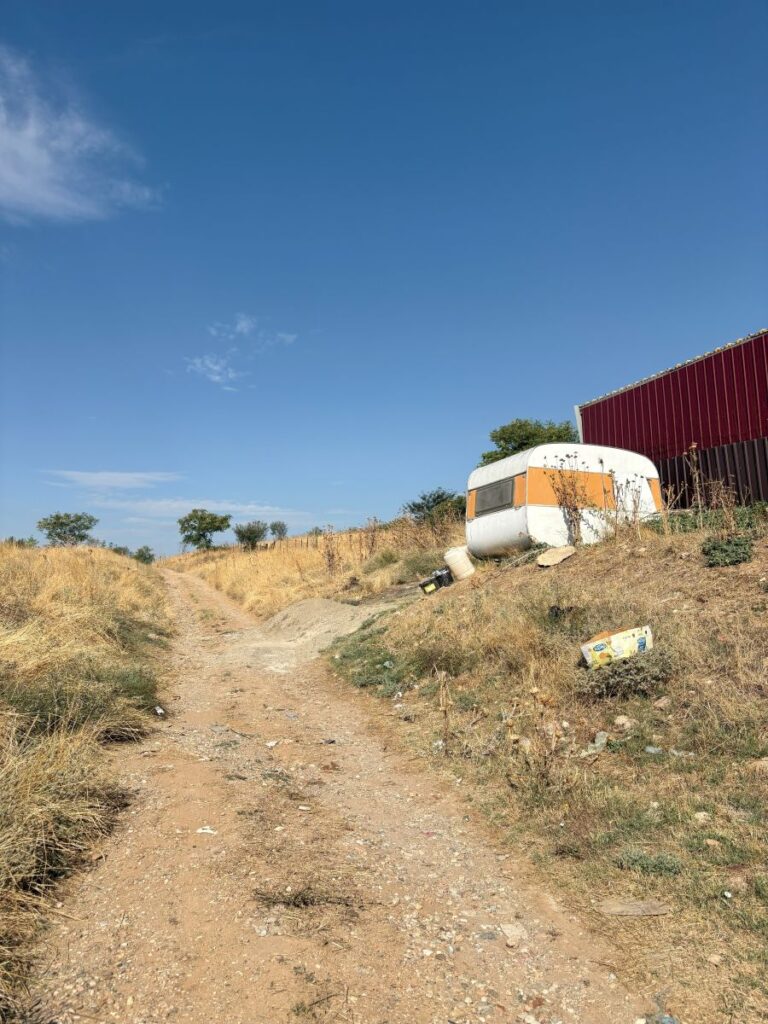
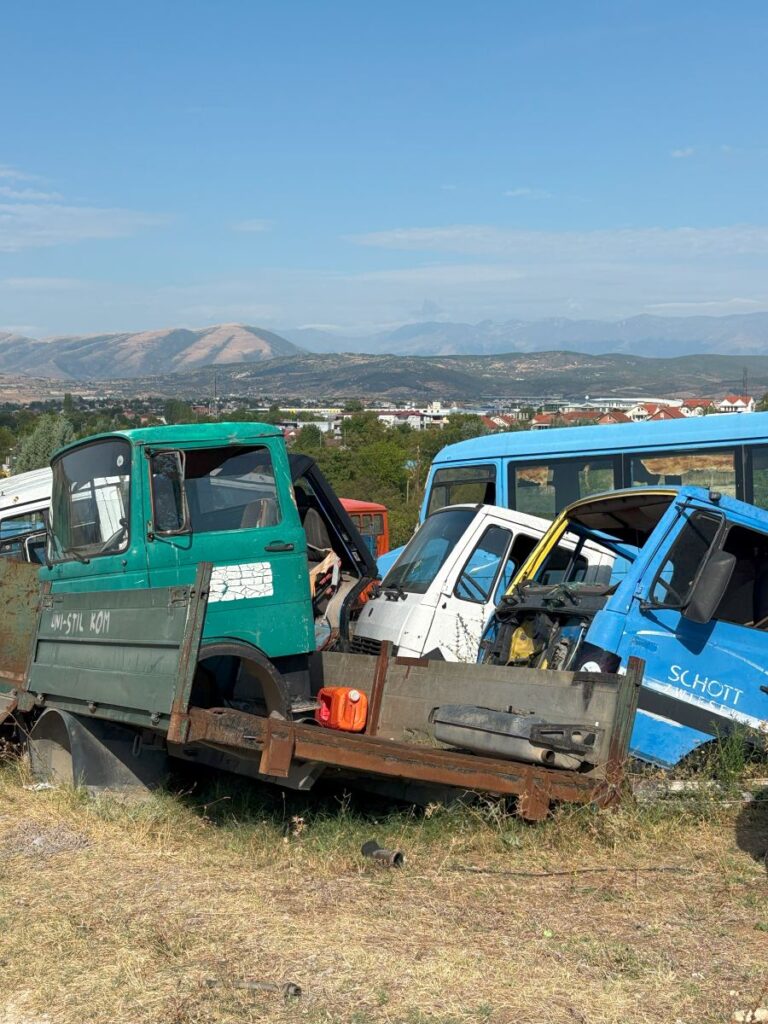
Driving? Do your best to find a gravel road, I know there is one because a vehicle was parked at the aqueduct while I was there and I witnessed him drive away.
First Encounter
This is an incredible historical site and as such, one would think it might be protected. Well, it is not. There is no fencing, no official entrance, just piles of garbage dumped all around this marvel.
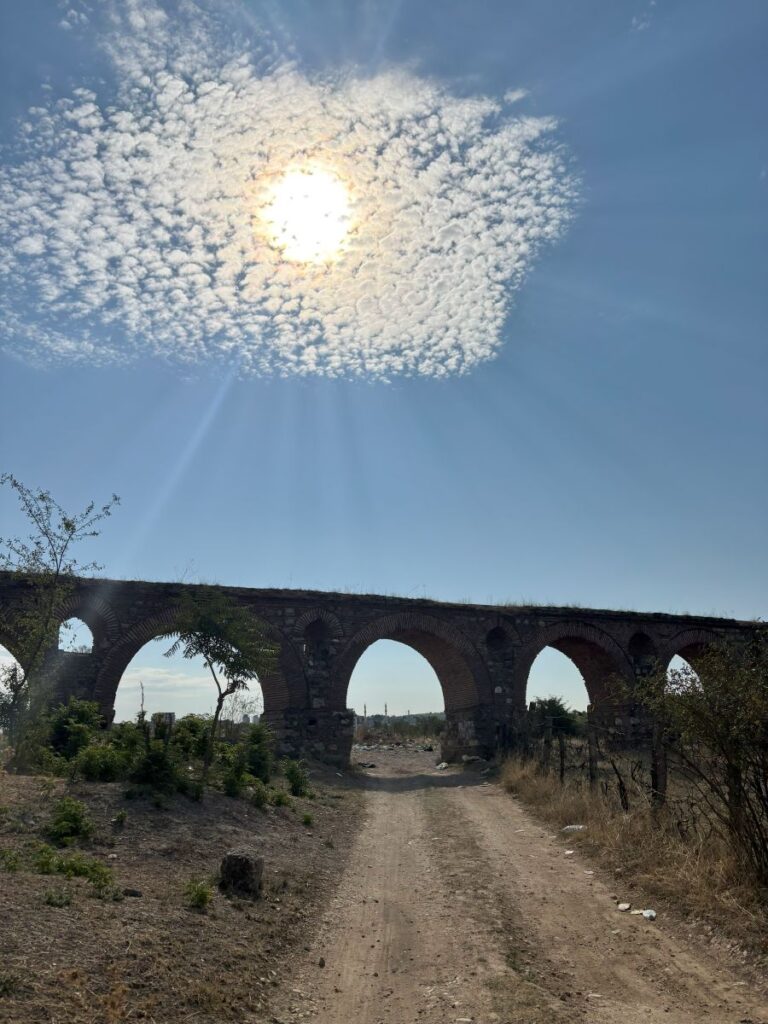
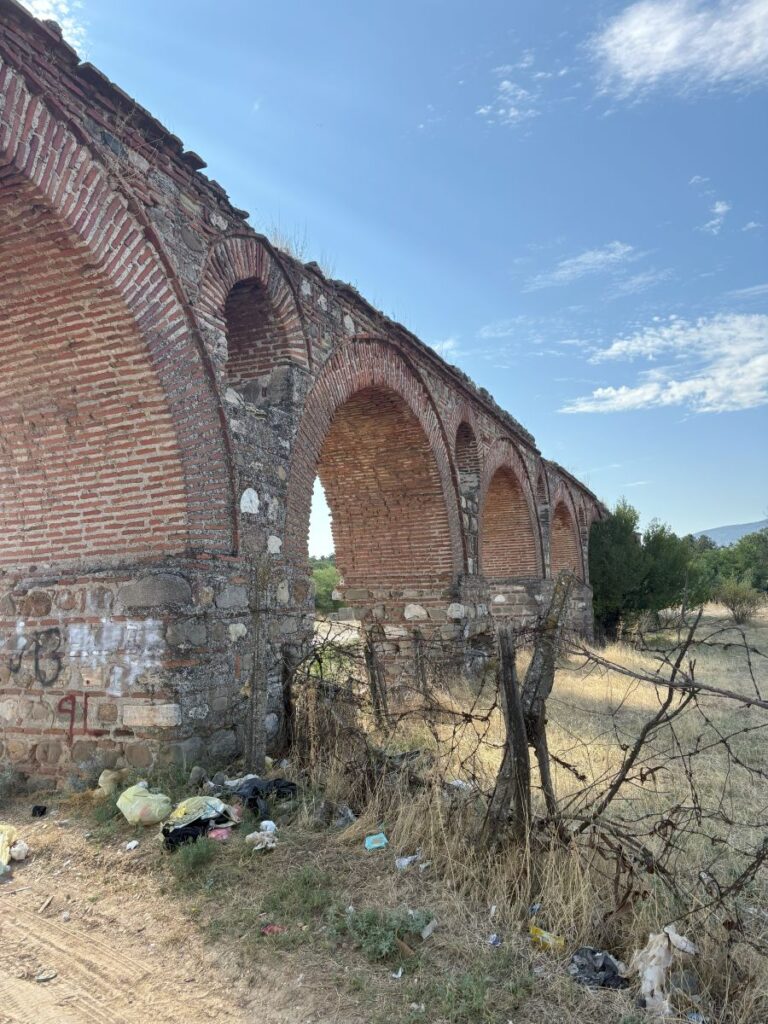
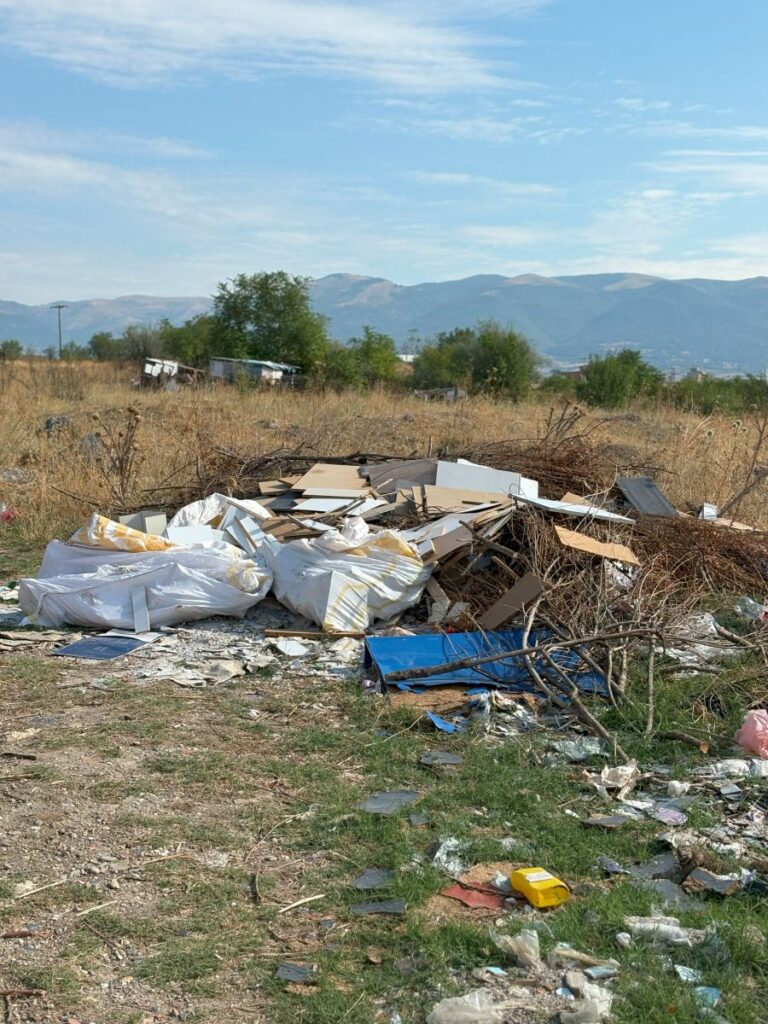
Even if the approach is lackluster, the sight itself is magnificent. Glowing warm hues of red under the morning sunshine, the Skopje Aqueduct is the only aqueduct in North Macedonia. In the former Yugoslavia, she is one of only three! It consists of 55 intact arches and was used to carry water into the city up until the 18th century. Originally this aqueduct was 9 kilometers long, however today, those 55 arches measure about 385 meters.
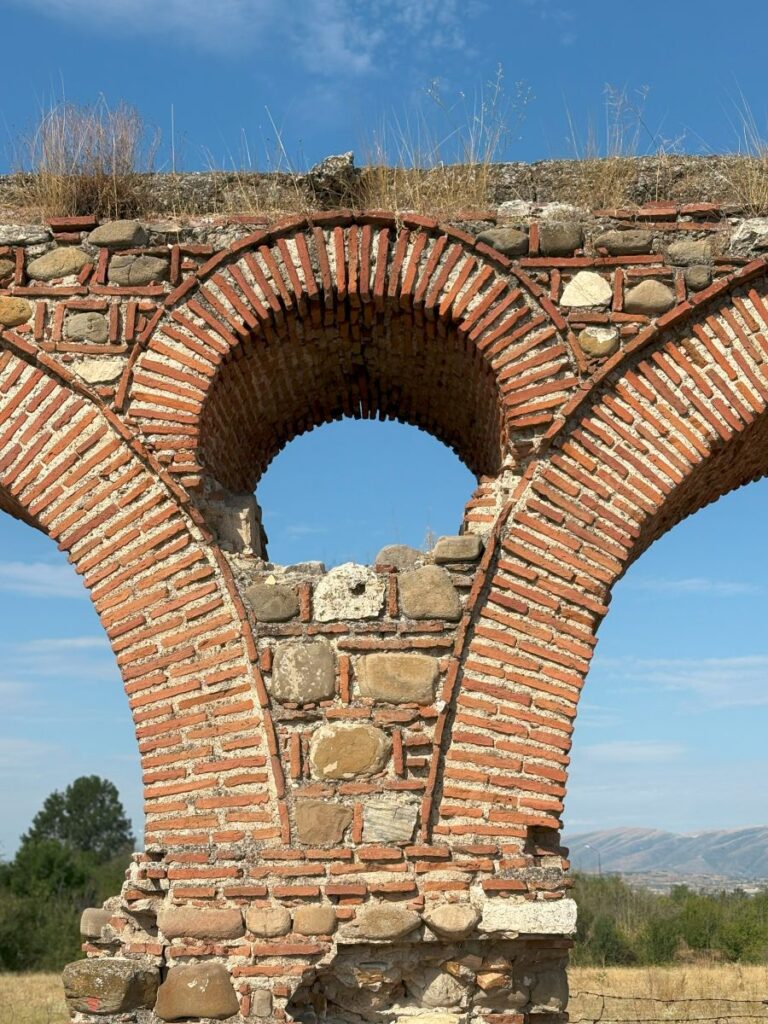
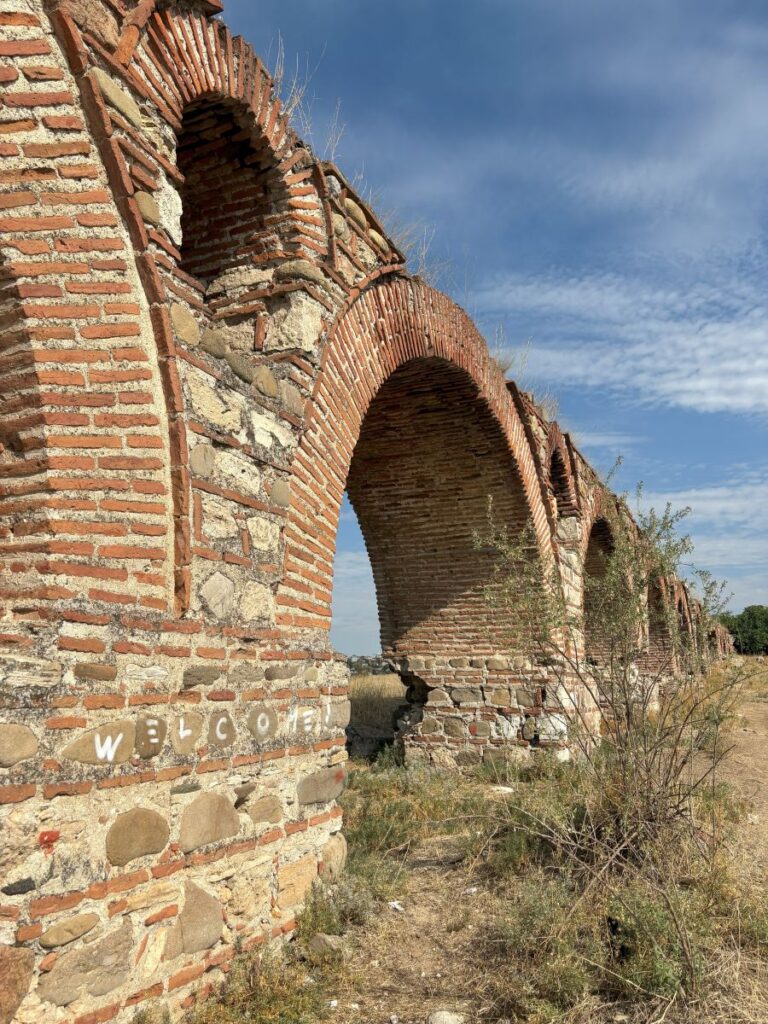
So What is the Mystery?
No one knows who made it! There are three theories and none is strong enough to rule out the others. Let me explain. The theory with the most age, 2000 years’ worth, is that it was constructed by the Romans. We all know how proficient they were with aqueducts. The ancient Roman settlement of Scupi located mere kilometers away, makes this a very plausible option.
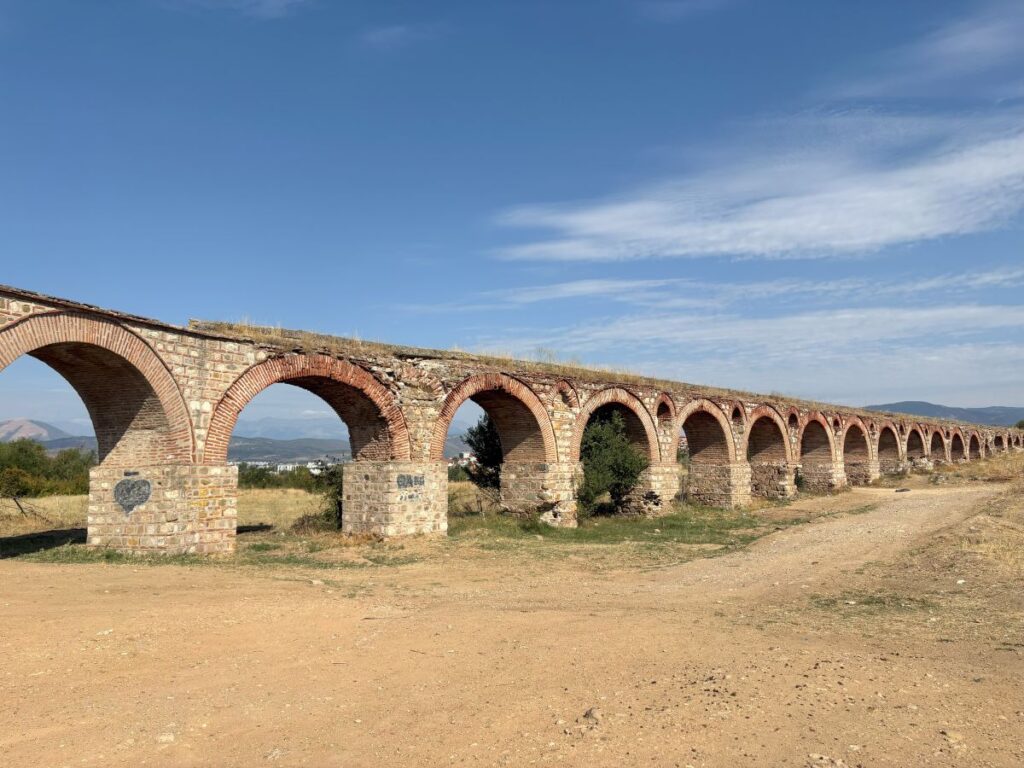
Or, was it the Byzantines? If this theory is correct, it was constructed during the 6th century. The Emperor Justinian I had planned to build a city here called Justiniana Prima. It was to serve as the administrative Byzantine capital in the Balkans.

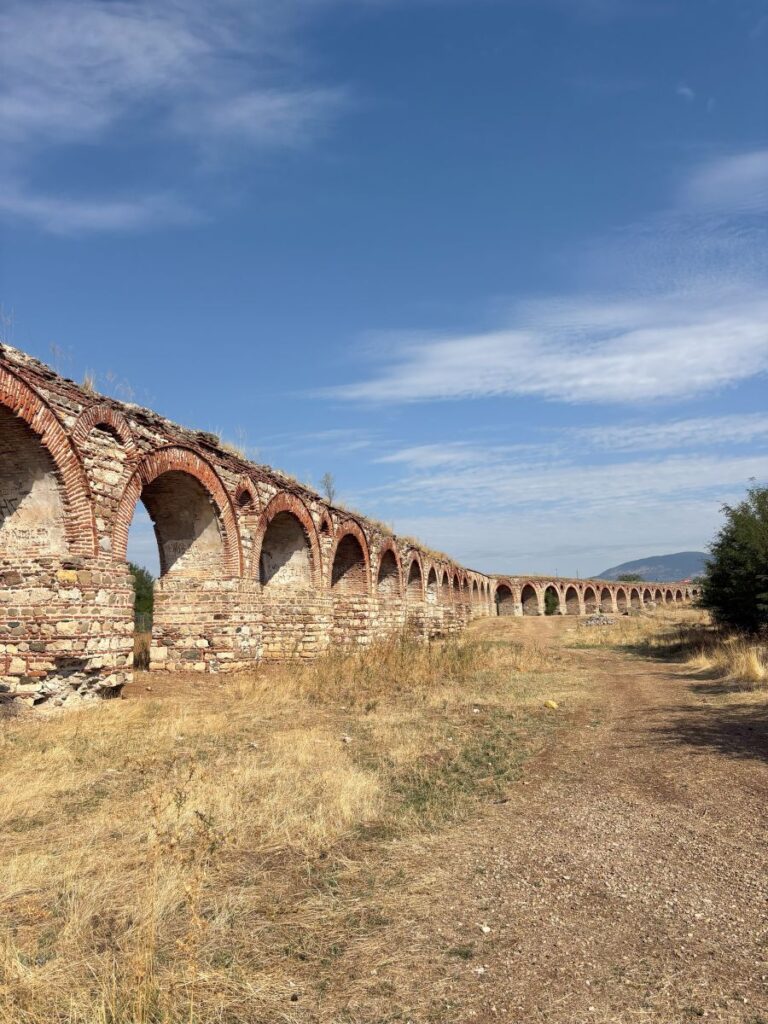
Lastly, it could have been constructed in the 16th century by the Ottomans who occupied this land for 520 years. It would have fed their numerous hammams in what is current day Skopje.
What do you think?
The Site
I mentioned previously that it is out in the middle of nowhere and strewn with garbage. It looks to be a hang out spot perhaps, with the amount of graffiti too. Although interestingly, I can see that some of the etched graffiti is more than 75 years old! I had brought a few little items to have a picnic with, but with the flies and garbage, it wasn’t a pleasant place to linger. Also, that vehicle with the lone male occupant was making me feel uncomfortable.

Walking towards the military base visitors will reach an area where there has been a recent attempt to stop a segment from falling over. This is as far in that direction as one can walk. To turn around and go the other way, in fairly short order, you will reach a farmers barbed wire fence. There is perhaps 30 arches than can be explored.
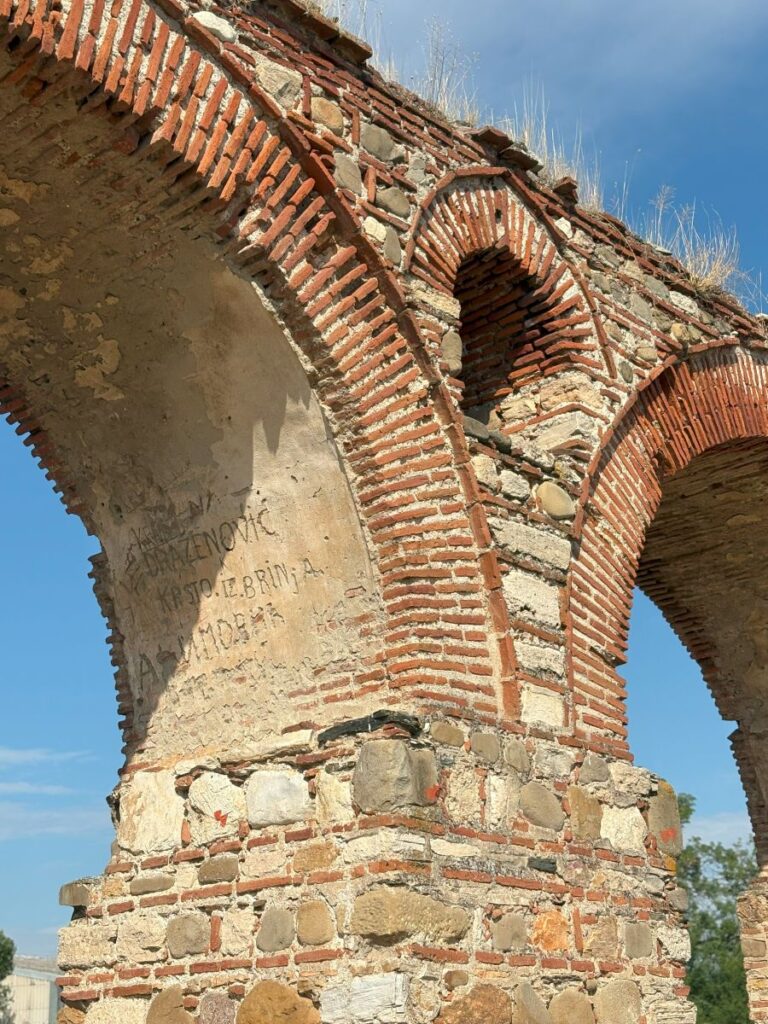
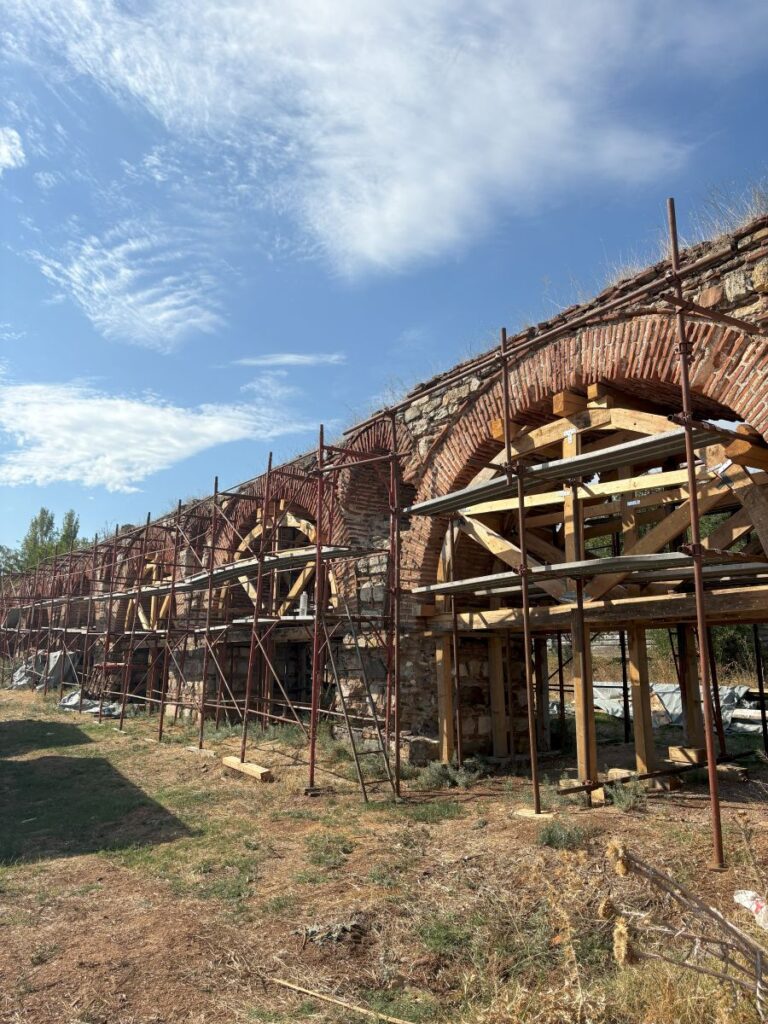
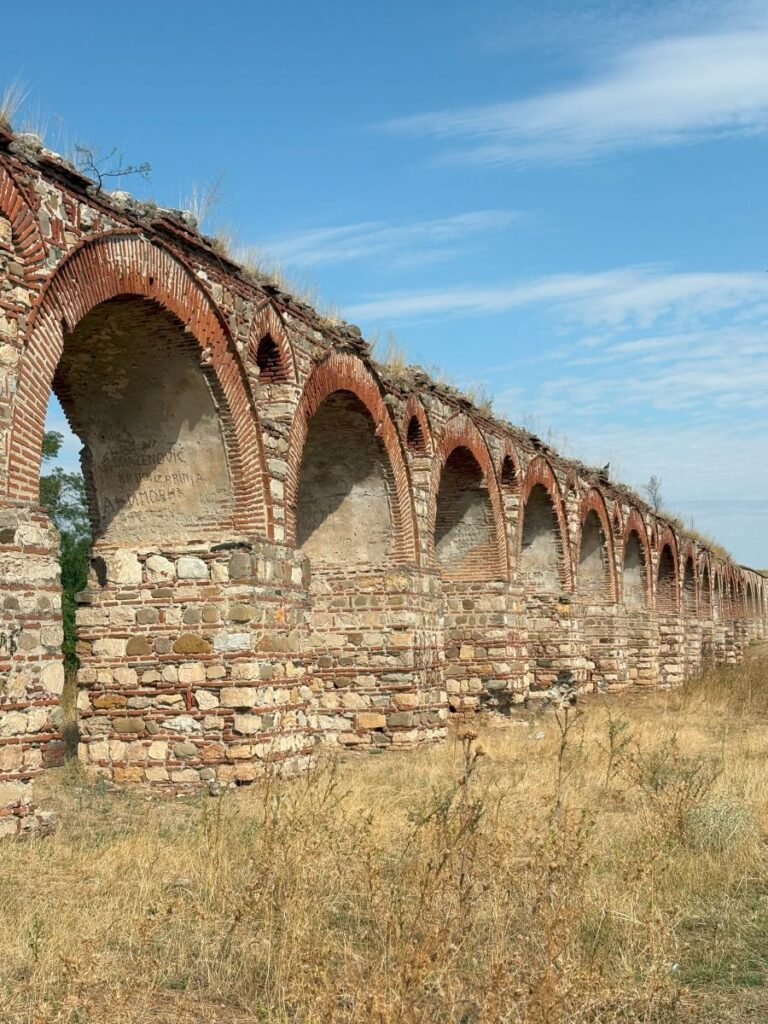
Returning to Skopje
I was not going to walk the way I had come, so I Google mapped a different route. This was no better. It took me along very busy streets with no sidewalk and zero shoulder. Walking beside fields of tobacco plants. All I could do was persist, and eventually I reached the outer limits of the city and found a sidewalk again. Not for the faint of heart, but doable if you keep your wits about you at all times.
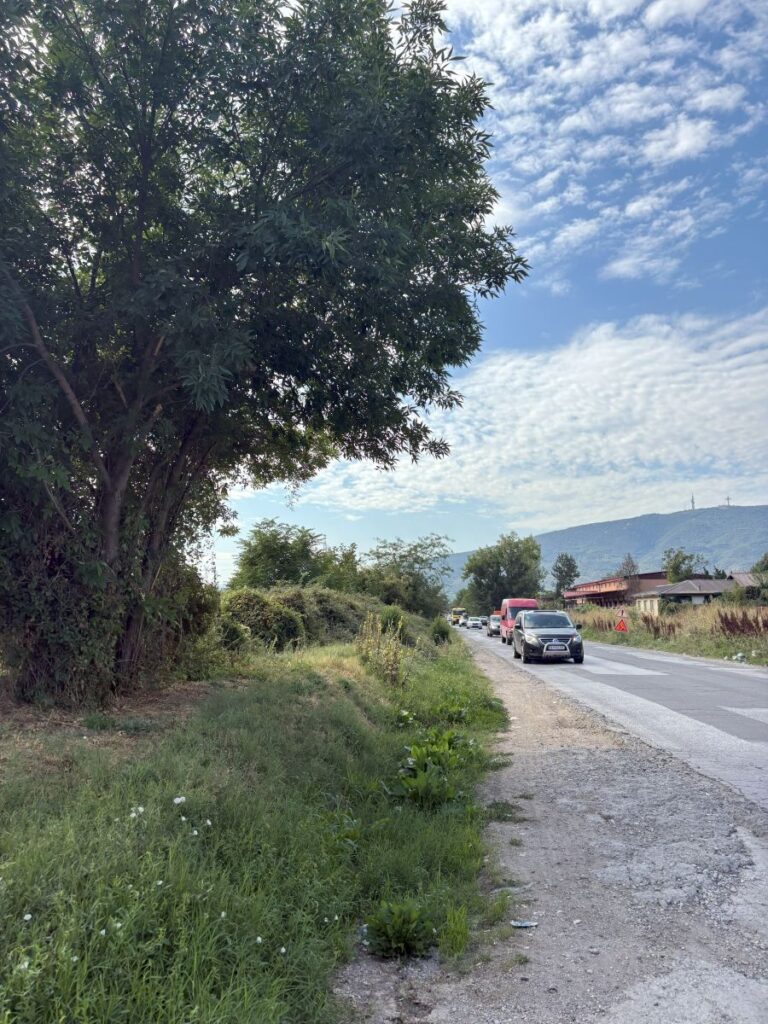

If you are a lover of ancient history, I would definitely make the attempt to see the Skopje Aqueduct. While she may be a challenge to find and not in the best environment, the structure itself is such a marvel to see. Those old bricks and stones have held up for centuries and have countless stories they keep secret. As to her mystery? I’m not sure which theory I prescribe to, perhaps all three.
